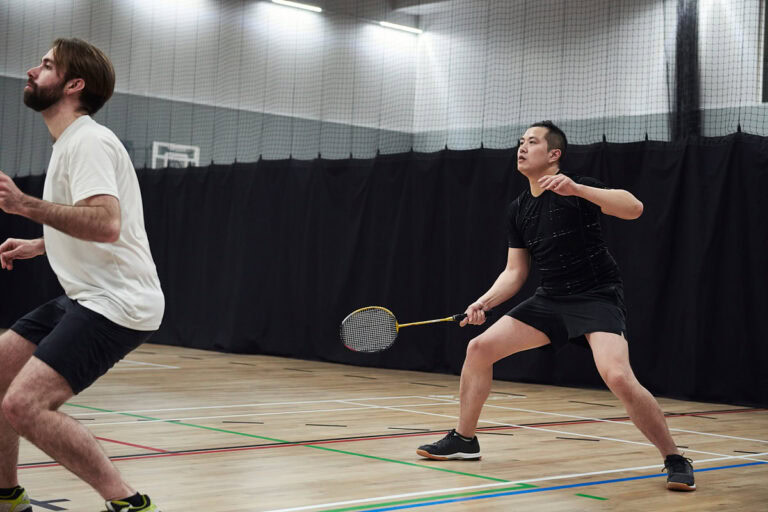Following last week’s blog about the challenges faced by leisure facilities and local authorities, this blog will explore the impact of facility closure on young people’s activity levels and how Havering Council have sought to ensure that their facilities are sustainable for future use.
Impact of facility closures on exercise levels
Our research has highlighted that 80% of Londoners say swimming at a local pool helps them to lead a healthy and active life. In addition, 79% of Londoners see swimming as an essential life skill, for example, to ensure water safety, and 75% of Londoners see it as especially important for children.
The increasing risk of leisure facility and swimming pool closures is particularly concerning, as it could have a significant effect on young people’s access to sport and physical activity. Leisure centres are places where young people develop positive lifelong habits of staying active, especially those living in deprived areas.
Further, national governing bodies of sport and sport activity providers face the risk of not being able to deliver activities in their local leisure centres and not being able to increase the demand for their activities.
The implications of leisure and swimming facility closures in local communities include:
– Declining number of opportunities to access to water-based sport – such as canoeing and sailing – due to the inability to first learn to swim;
– Lack of pools for water-based sports – such as kayaking – to use for their capsize training courses;
– Increased risk of drowning, with ethnically diverse groups being at the greatest risk as acknowledged by the Black Swimming Association;
– More fragmented local community;
– Increased levels of mental health issues.
To ensure the sustainability of leisure centres, we need to go over and above in developing innovative approaches to inspire and support local authority leisure centres to:
– Adapt to climate change;
– Minimise energy use;
– Develop more sustainable business models to provide low-cost services to London’s deprived communities.
Key learnings from the London Borough of Havering leisure centre visit
When London Sport was invited by Guy Selfe, Head of Leisure and Culture, to visit the London Borough of Havering, Emily Robinson, David Gentles, and Josef Baines learned how the borough’s three flagship leisure facilities (Harrow Lodge Leisure Centre, Rainham Leisure Centre and Sapphire Ice and Leisure) are using low-cost, cutting-edge and highly successful facility and business models.
At the heart of the Council’s leisure management contract and design of the centres is a delicate balancing act between meeting communities’ needs and ensuring that the centres are commercially focused, aiding their survival and ability to keep pace with the new developments. Key learnings include:
Consider strategic positioning of leisure centres to maximise public use. When developing new leisure centres, it must be bespoke to the area. For example, having a leisure centre in the middle of Romford town surrounded by flats, businesses, shops, transport, and other services increases the likelihood of centre use as a community hub and sustain its business over the long-term.
Building new instead of re-using old buildings to save costs. For example, Harrow Lodge and Rainham leisure centres were built from scratch using low-cost sustainable materials that are fit-for-purpose to meet existing and future circumstances. In terms of cost, Rainham Leisure Centre cost £8m to build a facility comprising a six-lane 25m pool, 75-station gym, two large exercise studios and associated changing rooms.
Carefully consider facility design to future-proof its use and minimise long-term running costs. For instance, install large windows to reduce electricity use, and build swimming pools off the ground to reduce excavation costs and to provide easier access to pipes to make maintenance work easier. In addition, ensure that the facility can extend to meet future growing demand from population growth.
Keep costs low through constant innovation. There are various ways to keep the running costs of a leisure centre as low as possible and sustain its business. For example, selling old gym equipment to reuse money for new equipment. Having a gym in the leisure centre helps reduce swimming pool running costs, including pool fees. Further, seeking funding, developing business partnerships, and hiring out multifunctional sport halls are various initiatives used to gain commercial income whilst meeting local community needs.
Relationship is key to running successful leisure centres. Longevity and quality of relationships with leisure management companies is key to delivering successful and resourceful leisure centres. Effective stakeholder and political relationships can help unlock further resources and support swimming pool running costs.
Regularly train leisure centre staff on the impact of climate change and sustainability. A more enlightened and knowledgeable workforce with good work-related habits can help reduce energy costs and future-proof the running of the leisure centre.
There are best practice examples we can learn from other sustainable and innovative leisure centres across the country. For example, Oxford City Council’s four leisure centres, Portsmouth’s Ravelin Sports Centre, modular / Passivhaus buildings such as Spelthorne Leisure Centre in Staines, and a data centre to heat the swimming pool at Exmouth Leisure Centre. We can also draw further learnings from London-wide leisure centres funded by the Sport England Swimming Pool Support Fund.
Using innovative approaches as outlined above to sustain leisure facilities is one thing; however, we need to go beyond that. Future-proofing leisure centres and their position in the community requires a shift in how we view an active lifestyle. For example, competitive swimming consists of a small proportion of the population, so we need to shift the focus from designing pools that focus on competitive swimming to one that focuses more on getting a diverse range of population to stay active.
Swimming pools should be considered by the NHS and GPs as part of their health prevention programmes and to improve population weight management. Accelerating the integration of community services into a ‘Community Hub’ such as health clinics, GP surgeries, pharmacies, and leisure centres into one building would help future-proof leisure centre swimming pool energy costs and increase the focus on population health.
Lastly, to make leisure facilities effective ‘Community Hubs’, we need to rethink the concept of energy use. Instead of relying heavily on the National Grid and contribute towards costly upgrades, authorities would need to consider incorporating leisure facilities as part of their wider infrastructure planning system. Becoming part of a more localised energy system would enable leisure facilities to generate renewable energy for their own use as well as export surplus energy for the community’s use, which could help reduce local electricity prices and take the pressure off the National Grid.
In next week’s blog, we will share various resources and information to support London’s leisure facilities to become more sustainable.

